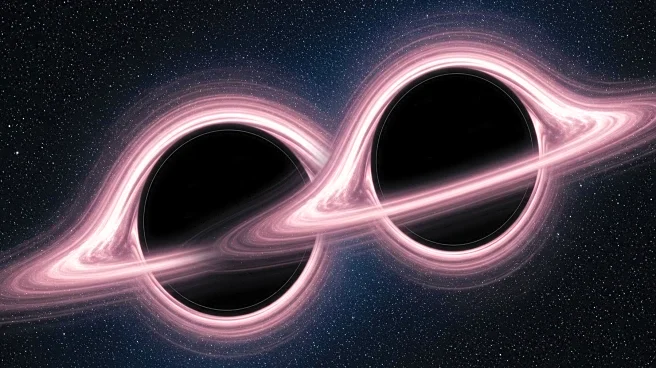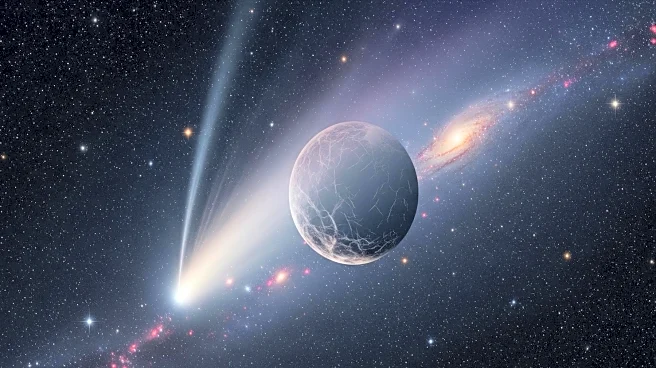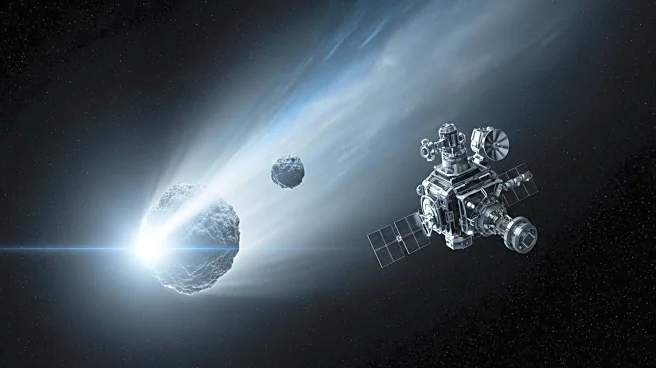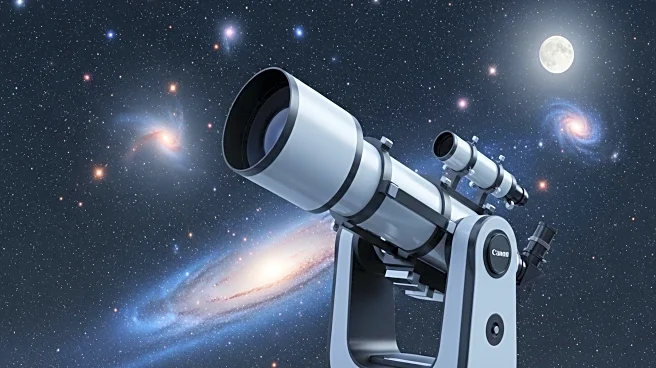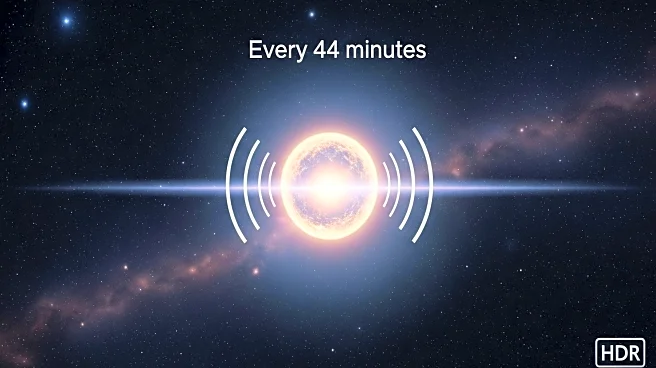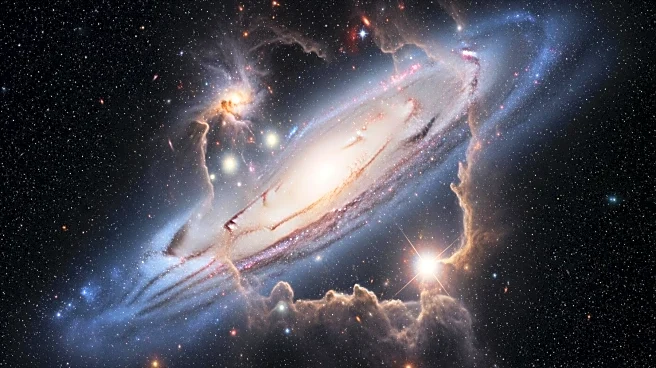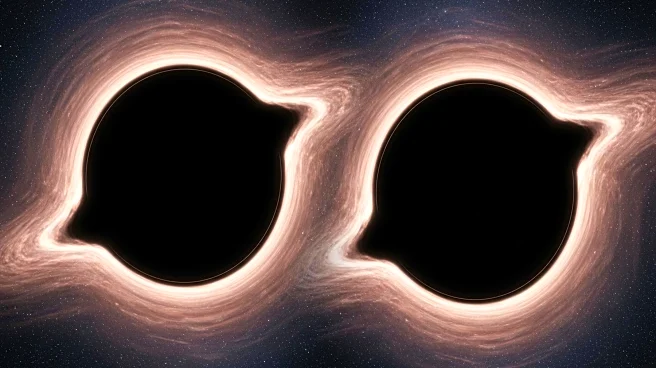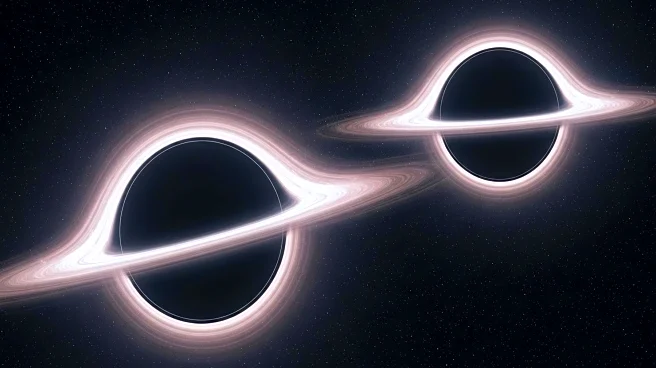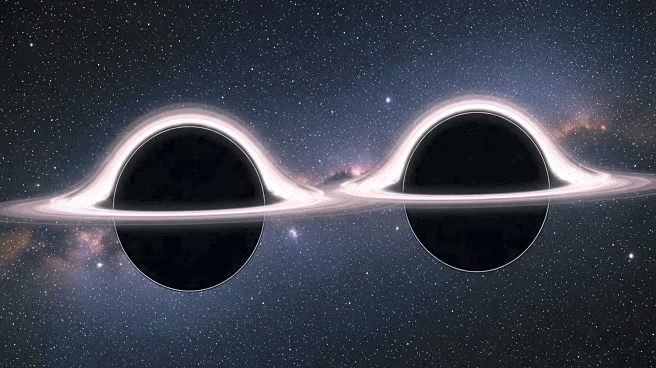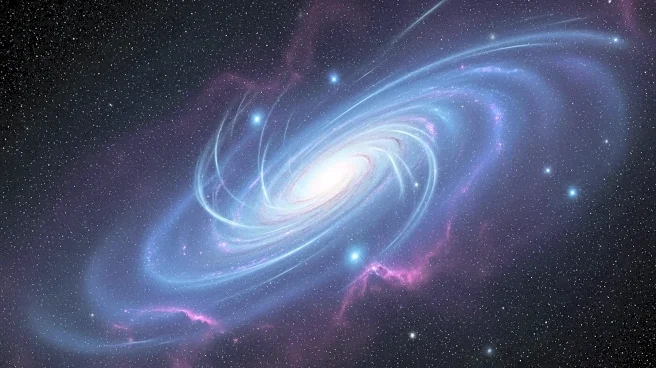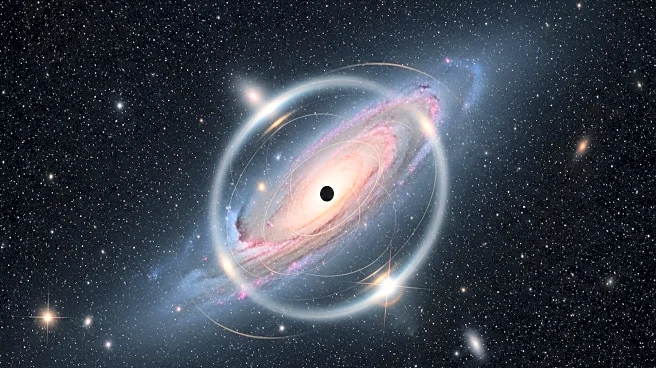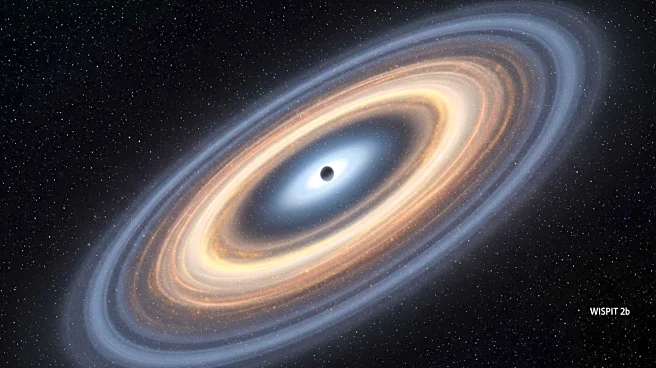What is the story about?
What's Happening?
Astronomers have successfully captured the first direct radio image of two supermassive black holes locked in a death spiral within the galaxy OJ 287, located 3.5 billion light-years away. This marks the first time distinct jets from both black holes in a known binary have been imaged, confirming the model of the galaxy's double core. The larger black hole, with a mass 18 billion times that of the Sun, and its smaller companion, at 150 million solar masses, are engaged in a complex gravitational dance. The image reveals the intense particle jets emitted by the black holes, providing crucial evidence of their existence and behavior.
Why It's Important?
This groundbreaking image provides valuable insights into the behavior of binary black holes, which are key to understanding the dynamics of galaxies and the universe's evolution. The ability to image these jets confirms theoretical models and enhances our knowledge of black hole interactions. This discovery could lead to advancements in astrophysics, influencing future research on gravitational waves and cosmic phenomena. The findings also underscore the importance of high-resolution imaging techniques in exploring distant cosmic structures.
What's Next?
Further verification of the findings is underway, with another radio map of OJ 287 being constructed. This may reveal additional clues about the jets' behavior. Future observations, potentially in the 2030s, could provide more detailed insights into the secondary jet's trajectory and interactions. Continued research will focus on refining models of binary black hole behavior and exploring their impact on galaxy formation.
Beyond the Headlines
The discovery highlights the intricate and extreme interplay between supermassive black holes, offering a glimpse into the universe's most powerful forces. It raises questions about the nature of black holes and their role in cosmic evolution. The ethical dimension involves the pursuit of knowledge about the universe's origins and the potential impact on humanity's understanding of its place in the cosmos.
AI Generated Content
Do you find this article useful?
